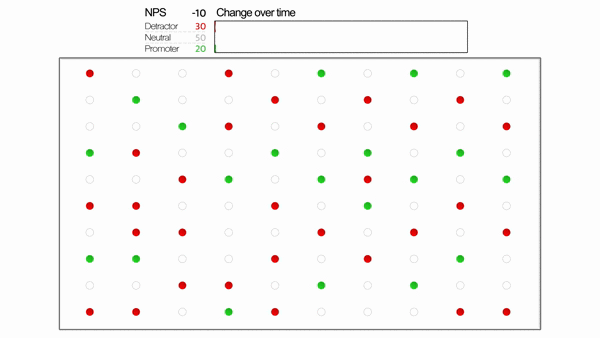Customer Experience
4 steps to designing a transactional NPS project
In 2008, Starbucks launched “My Starbucks Idea,” a simple way for customers to give input into products and services, improvements, and corporate responsibilities. It was an instant success and Starbucks has received thousands of ideas and implemented many of them. Starbucks is successful in large part for a simple reason: they focus on listening to customer feedback for the purpose of creating loyal customers.
Customer loyalty is built on the smaller interactions between your company and your customer—from learning about your products, to purchasing, to fixing a support issue. These transactional moments demand transactional feedback.
Much like it sounds, transactional feedback is the practice of soliciting feedback after customer interactions. Transactional feedback does not comprise a full customer experience (CX) program, but it’s a good place to start. Done well, transactional feedback can help you:
- Measure and optimize customer interactions
- Improve customer experience
- Identify which parts of the customer journey need improvement
- Build more loyal customers and capture more market share
Transactional NPS
Net Promoter Score (NPS) has been used for years to measure customer experience and loyalty. There are two types of NPS surveys: relational and transactional. Relational NPS surveys are sent on a regular basis, such as quarterly or once per year. Transactional NPS surveys are sent when a customer completes a purchase or has an important interaction with your company.
Transactional NPS asks a simple question on a rating scale.

Based on the rating, respondents are divided into three groups:
- Promoters are respondents who provide a score of 9 or 10.
- Passives are respondents who respond with a score of 7 or 8.
- Detractors are respondents who respond with a score of 0 to 6.
To find your score, subtract the percentage of promoters from the percentage of detractors. For example, if 10% of our respondents are detractors, 20% are passives, and 70% are promoters, your NPS score would be 70-10 = 60.
Designing Your Transactional Feedback Project
Transactional feedback gives you vital insights about each touchpoint, including knowledge of what you are doing well and where you have opportunities to improve. You can start your first transactional NPS project in four steps.
Step 1: Determine your touchpoints
Depending on your organization and industry, you may have several customer interactions or only a handful. During this step, decide which touchpoint will give you the most value. Touchpoints may include in-store purchase, online purchase, call center interaction, loyalty program, etc.
Step 2: Choose your distribution channels
Now that you know which touchpoint you want to measure, you can decide on the best way to reach your customer. There are several options to distribute your surveys, such as an on-location device, SMS message, and email.
Step 3: Design your survey
While you can be more elaborate, the basics of an NPS survey comprise the NPS question and a few follow up questions about the rating. You can also ask if your respondents want someone from your organization to follow up with them.
Step 4: Calculate your performance
Calculate your NPS score based on the formula from the section above.
Transactional NPS surveys are valuable tools to understand the customer experience for any touchpoint. If you are new to customer experience, transactional feedback is a great place to start and then evolve your program. Qualtrics now offers a Transactional NPS project in our new XM Solutions line. These project types are predesigned surveys, reports, and emails with an easy to use configuration wizard. The Transaction NPS XM solution is included with most Qualtrics licenses. To learn more about program design and strategy download the ebook below.
The more promoters you have for your business, the better. The best NPS programs turn detractors into these promoters. See the simulation below for a glimpse of what that could look like for your organization.

eBook: How to build your first transactional NPS project
